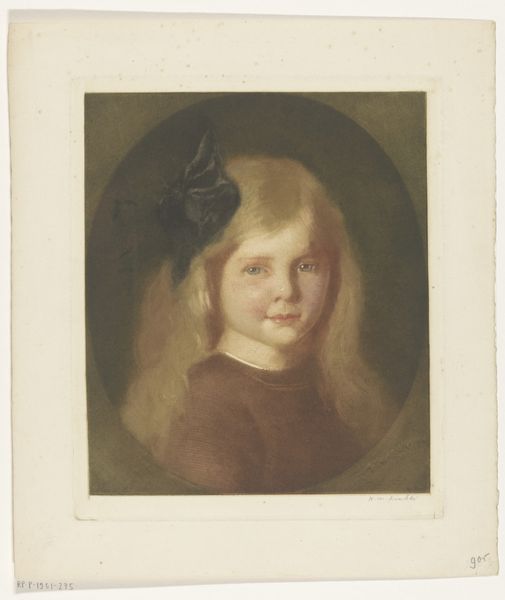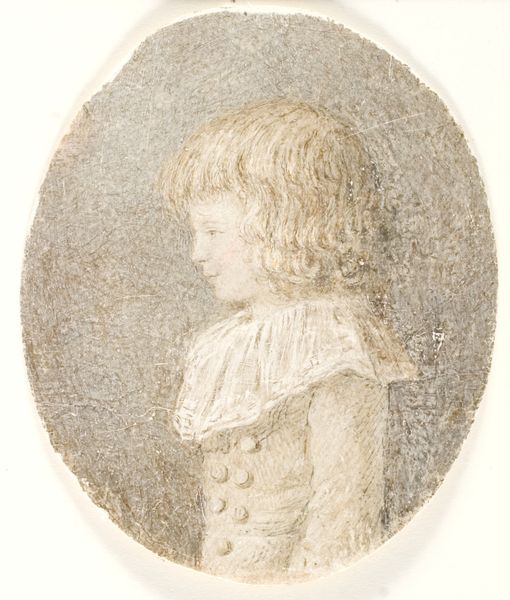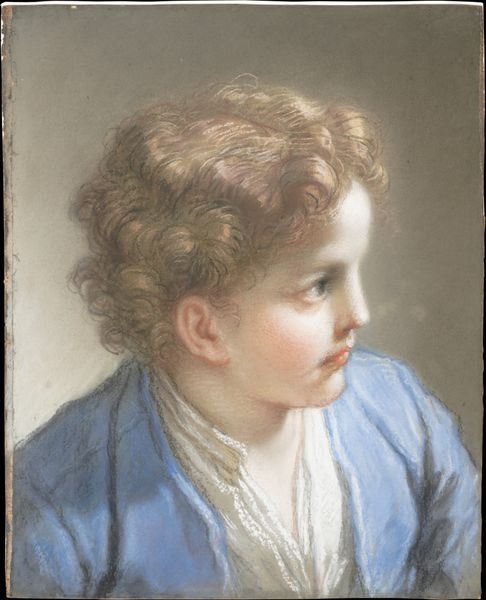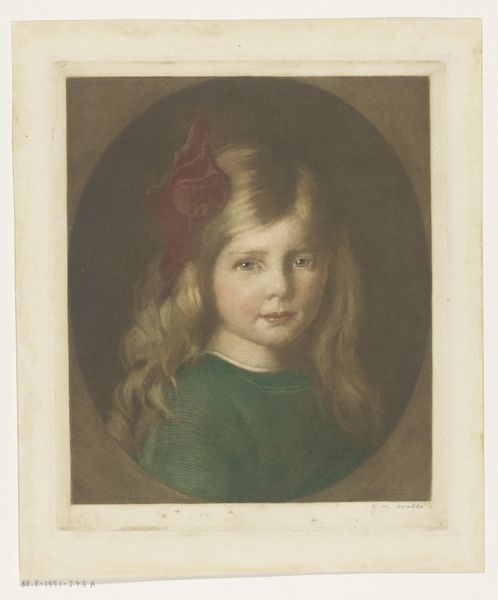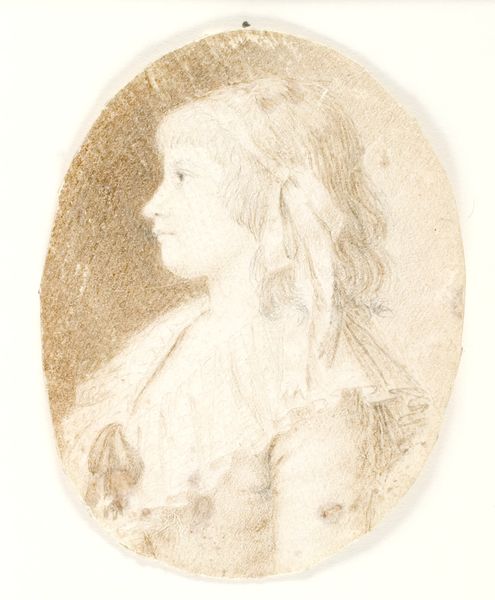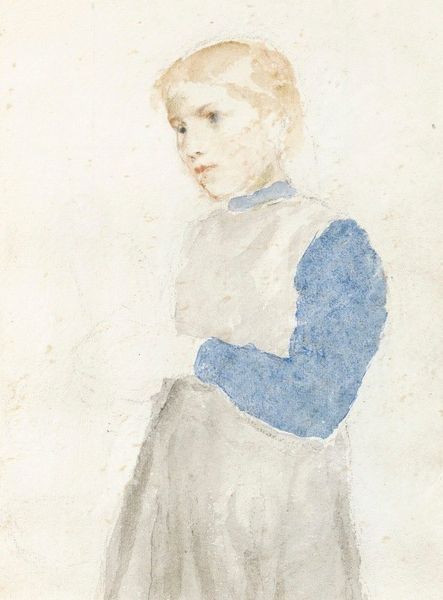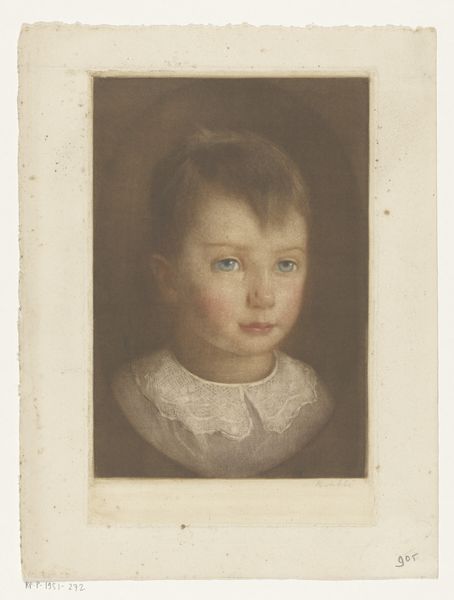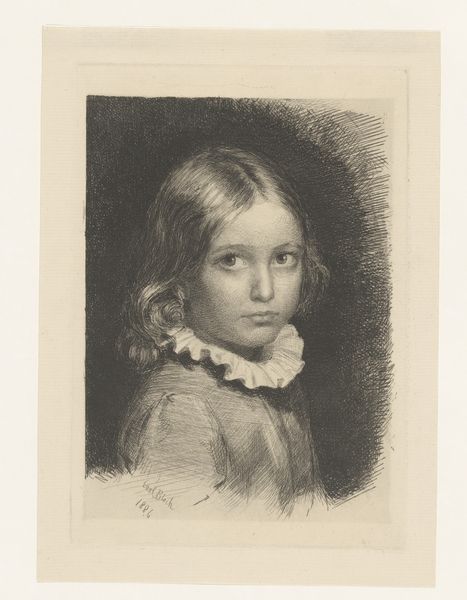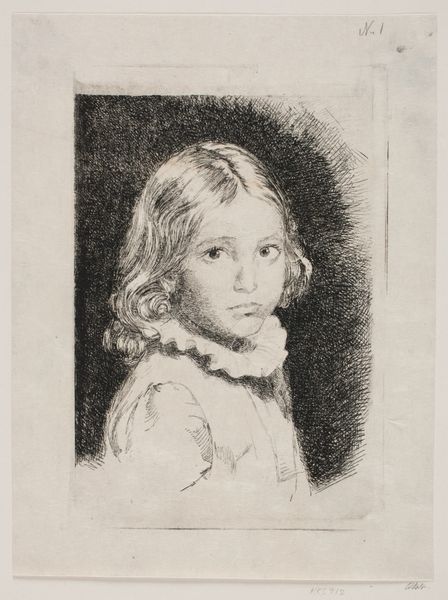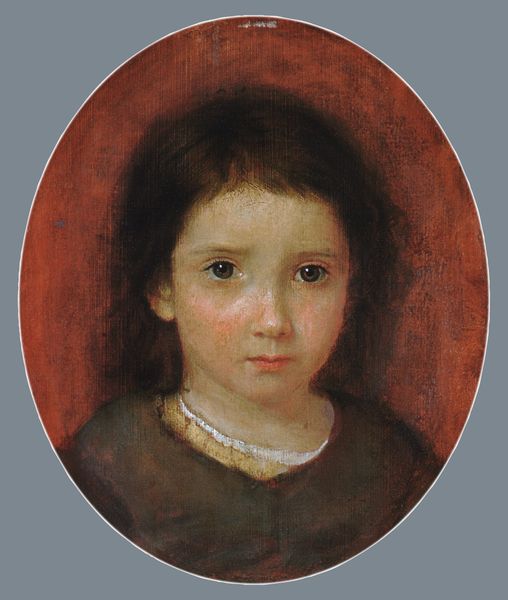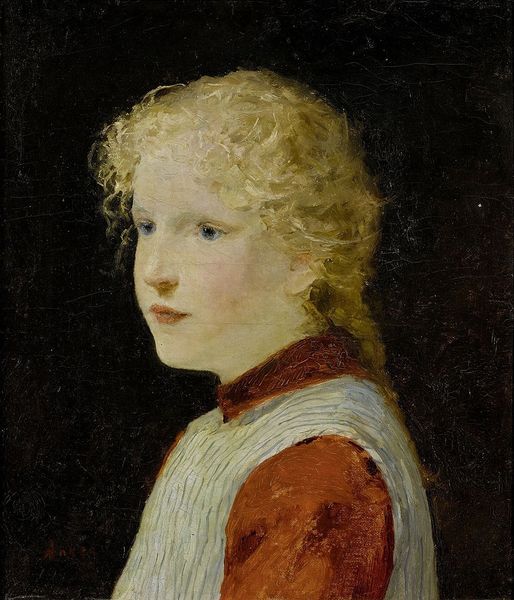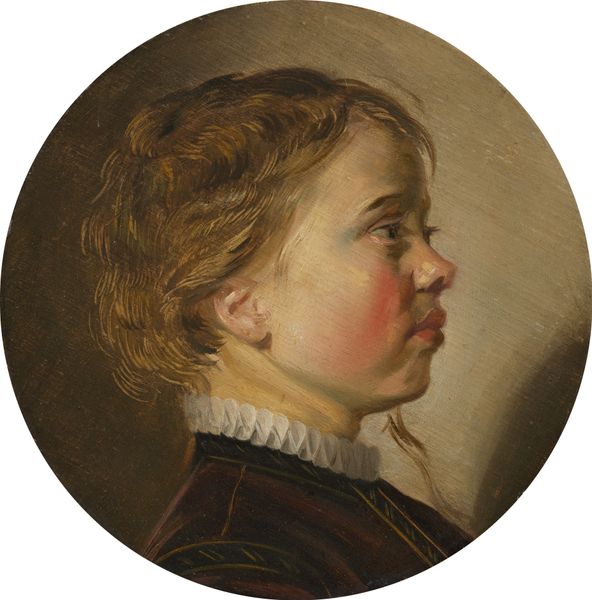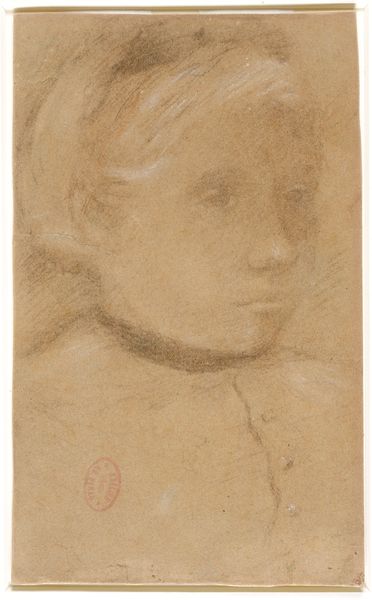
Copyright: Public domain
John Ruskin rendered "Portrait of Rose La Touche" in delicate hues of watercolor. The image encapsulates a complex relationship that was very much a product of its Victorian context. Ruskin, a leading art critic and social thinker, met Rose when she was a child, and he became infatuated with her. This portrait captures Rose’s ethereal beauty, but it also hints at the power dynamics inherent in their relationship. Ruskin idealized Rose, seeing in her a purity and innocence that reflected his own aesthetic and moral values. Yet, this idealization also placed an immense burden on Rose, who struggled to meet Ruskin's expectations and maintain her own sense of self. The fact that Ruskin pursued Rose, proposing marriage when she was still in her teens, highlights the patriarchal norms of the time and the limited agency afforded to young women. The portrait serves as a poignant reminder of the complexities of love, power, and representation in the Victorian era. It invites us to reflect on how societal expectations and individual desires can become entangled, shaping both the creation and the reception of art.
Comments
No comments
Be the first to comment and join the conversation on the ultimate creative platform.
